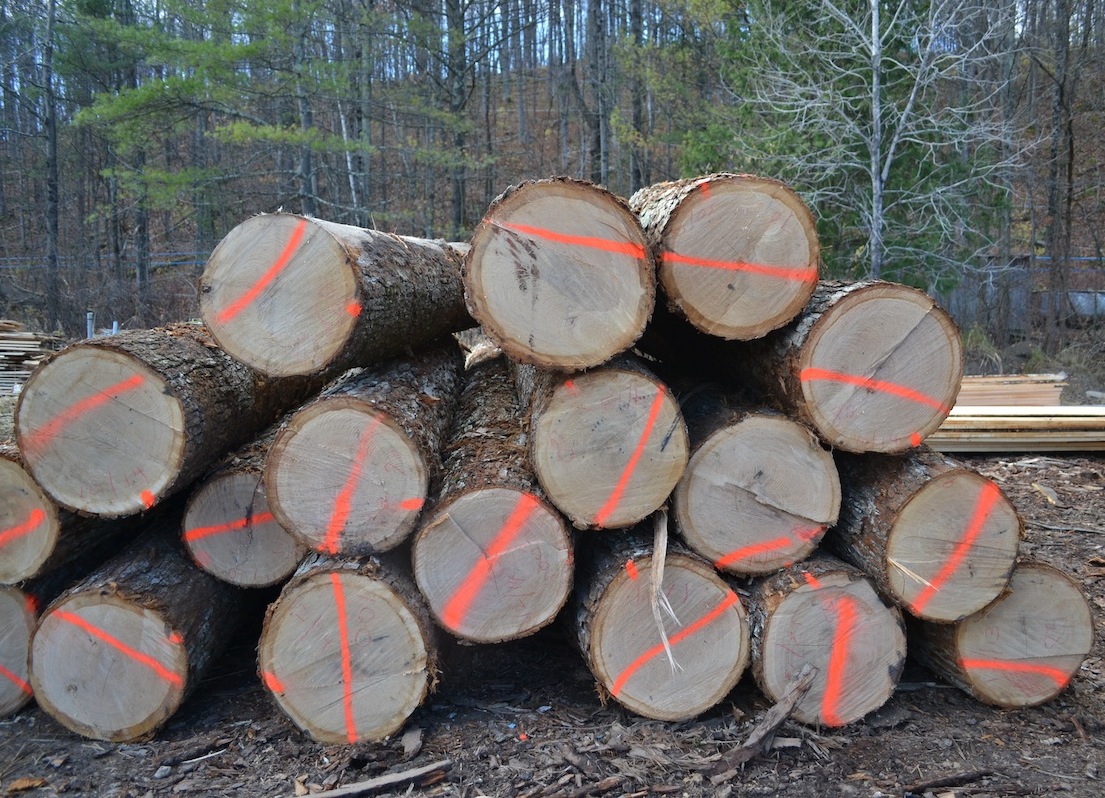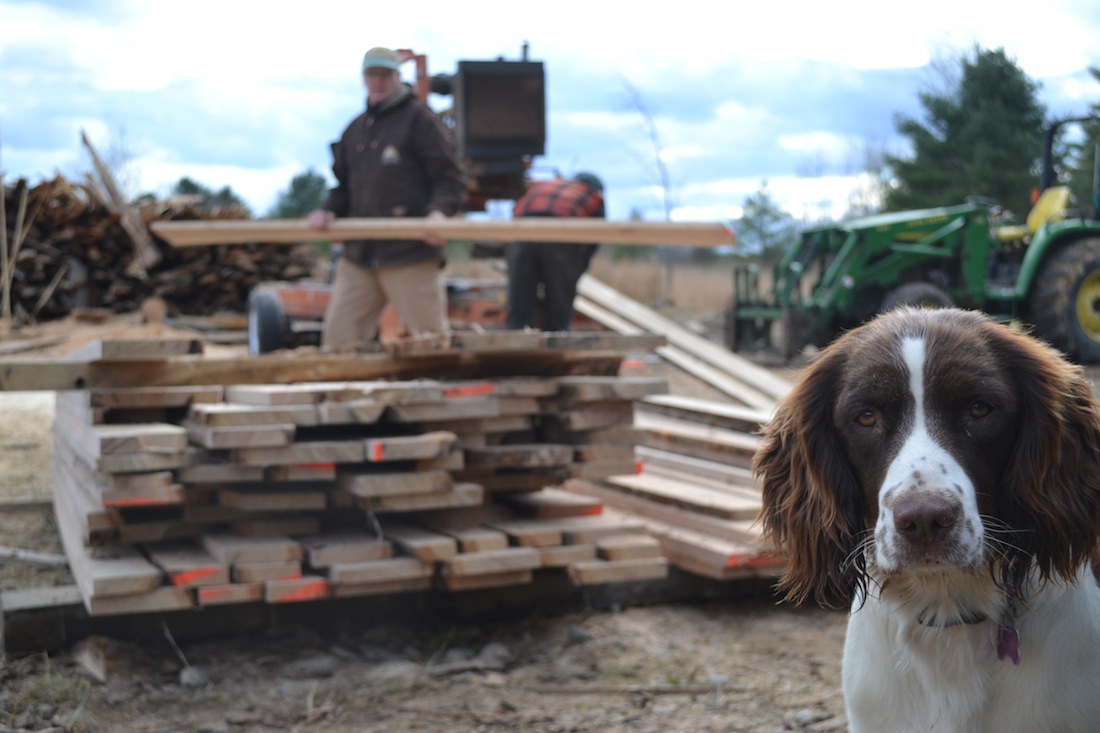Building a sustainable Caledonia Cooperage
We have gathered white oak in the Champlain Valley of Vermont to make barrels. Each log is over 100 years old and grows very slowly in this cool climate, the northern limit of the white oak. Because of the national barrel shortage, we started this project to make barrels, and this required a forester to find white oak, a sawyer to quarter saw the wood, and a cooper to make the barrels. This will allow us to support our farm partners and use more organic rye and corn.
 The harvest of these logs in the woods is very carefully mapped out. The consulting forester, my brother-in-law Joe Nelson, has a long term relationship with this land and family.
The harvest of these logs in the woods is very carefully mapped out. The consulting forester, my brother-in-law Joe Nelson, has a long term relationship with this land and family.
Below is a healthy forest after logging: hemlock on the left, pines in the background, and hardwoods — mostly white oak, along with maple and beech. Vermont has a Land Use program in which forests and fields are taxed at their forest and agricultural value, not the value of the land on the open market, which would make much of the land too expensive for landowners to hold on to and continue to use in agriculture and forestry. With this careful, sustainable management, the forests are actually healthier after this light, selective harvesting.
 The white oak used for whiskey barrels must be of the highest quality available, and is cut and handled in a very precise manner. The sawyer must perfectly quarter saw the wood in order to properly orient the open pores and grain so that the barrel will not leak. The oak will then be carefully stacked and allowed to air dry, preserving the natural resins, sugars and other organic compounds which flavor and color the finest whiskeys.
The white oak used for whiskey barrels must be of the highest quality available, and is cut and handled in a very precise manner. The sawyer must perfectly quarter saw the wood in order to properly orient the open pores and grain so that the barrel will not leak. The oak will then be carefully stacked and allowed to air dry, preserving the natural resins, sugars and other organic compounds which flavor and color the finest whiskeys.
 Below: Bob Hockert, our cooper (on the left), helps to pile the wood after it comes off of the saw mill, where Toby is sending more logs through to be quarter sawn.
Below: Bob Hockert, our cooper (on the left), helps to pile the wood after it comes off of the saw mill, where Toby is sending more logs through to be quarter sawn.
 “This oak is a cooper’s dream, with perfectly straight, tight grain and a sweet, highly fragrant nose. Being here during sawing you can just smell the whiskey in the air – this is a wonderful stand of timber. How long it’ll take to dry is anyone’s guess, but a good estimate would be in the 9 – 12 month range. Allowing the wood to age naturally in the open air will enable it to develop its own localized and unique flavor profile. This, along with the minerals and soil conditions these trees grew in, will impart a distinct flavor which will differentiate this whiskey from any produced elsewhere. Over the next year, Ryan will develop a relationship with this wood and these barrels and use this terroir to create a superb spirit”. –Bob Hockert, Cooper
“This oak is a cooper’s dream, with perfectly straight, tight grain and a sweet, highly fragrant nose. Being here during sawing you can just smell the whiskey in the air – this is a wonderful stand of timber. How long it’ll take to dry is anyone’s guess, but a good estimate would be in the 9 – 12 month range. Allowing the wood to age naturally in the open air will enable it to develop its own localized and unique flavor profile. This, along with the minerals and soil conditions these trees grew in, will impart a distinct flavor which will differentiate this whiskey from any produced elsewhere. Over the next year, Ryan will develop a relationship with this wood and these barrels and use this terroir to create a superb spirit”. –Bob Hockert, Cooper
The forester, the sawyer, the cooper, and the distillery all working together are going to make remarkable barrels for our spirits. Meanwhile, Phoebe just wants me to keep throwing wood for her to fetch and bring back.
 thank you for your interest in and support of our work with organic honey, grains, and elderberry,
thank you for your interest in and support of our work with organic honey, grains, and elderberry,
Todd D. Hardie